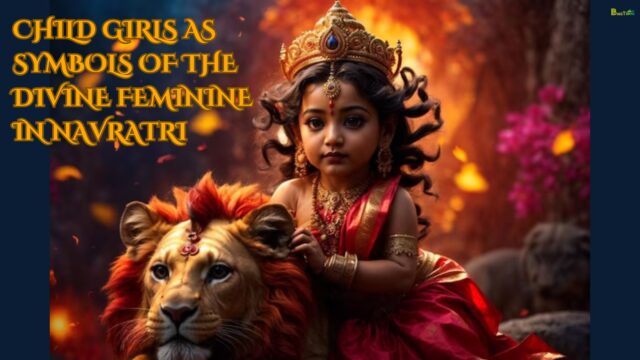Navratri, a nine-night time pageant celebrated throughout India, is dedicated to the worship of the Divine Feminine in all her bureaucracy. One of this competition’s most striking and specific aspects is the subculture of worshipping toddler ladies, called Kanjaks. This practice holds deep cultural and religious significance, symbolizing the divine feminine in a profound and multifaceted way.
The Concept of the Divine Feminine
The Divine Feminine, or Shakti, is an effective and multifaceted idea in Hinduism. It represents the creative, nurturing, and transformative electricity that permeates the universe. This strength is often personified as goddesses, each with their unique traits and attributes. Navratri is a time to honor and have fun with these goddesses, and the worship of infant girls is a significant part of this celebration.
The Symbolism of Child Girls
Child ladies are seen as embodiments of innocence, purity, and potential. They are considered to be untainted by the worldliness and negativity that could cloud the hearts and minds of adults. In this manner, they’re visible as natural representations of the Divine Feminine, loose from the restrictions and constraints that often hinder our connection to the divine.
The Kanjak Ritual
The Kanjak ritual is a relevant part of Navratri celebrations. On the eighth day of the pageant, households invite young ladies to their houses to be honored and worshipped. The girls are handled as guests of honor, fed a special meal, and given items. In return, the women bless the circle of relatives with their presence and bestow their advantages upon them.
The Significance of the Ritual
The Kanjak ritual holds several big meanings. First, it’s far a way of honoring the Divine Feminine in her most prone and innocent form. By worshipping baby women, households are expressing their reverence for the goddess and in search of her benefits. Second, the ritual is a reminder of the importance of shielding and nurturing children, especially ladies. It is a call to create a society that values and respects the rights of all youngsters.
The Cultural and Religious Context
The worship of toddler ladies in Navratri is deeply rooted in Indian culture and faith. It is a mirrored image of the conventional Indian values of admiration for elders, reverence for the divine, and safety of the inclined. The practice additionally attracts the Hindu belief in the power of blessings and the significance of honoring one’s guests.
Criticisms and Concerns
While the worship of child women is a lovely and significant lifestyle, it has also been a problem of complaint and concern. Some argue that the exercise can be exploitative, as it can lead to the commercialization of baby exertions and the objectification of young girls. Others have raised concerns about the protection and properly-being of the children concerned within the ritual.
Conclusion
Despite these criticisms, the worship of infant ladies in Navratri stays a big and cherished way of life in India. It is an effective symbol of the Divine Feminine in Navratri and a reminder of the significance of shielding and nurturing our children. As we continue to rejoice in this competition, it’s far vital to technique the exercise with compassion, respect, and dedication to the well-being of all worried.









